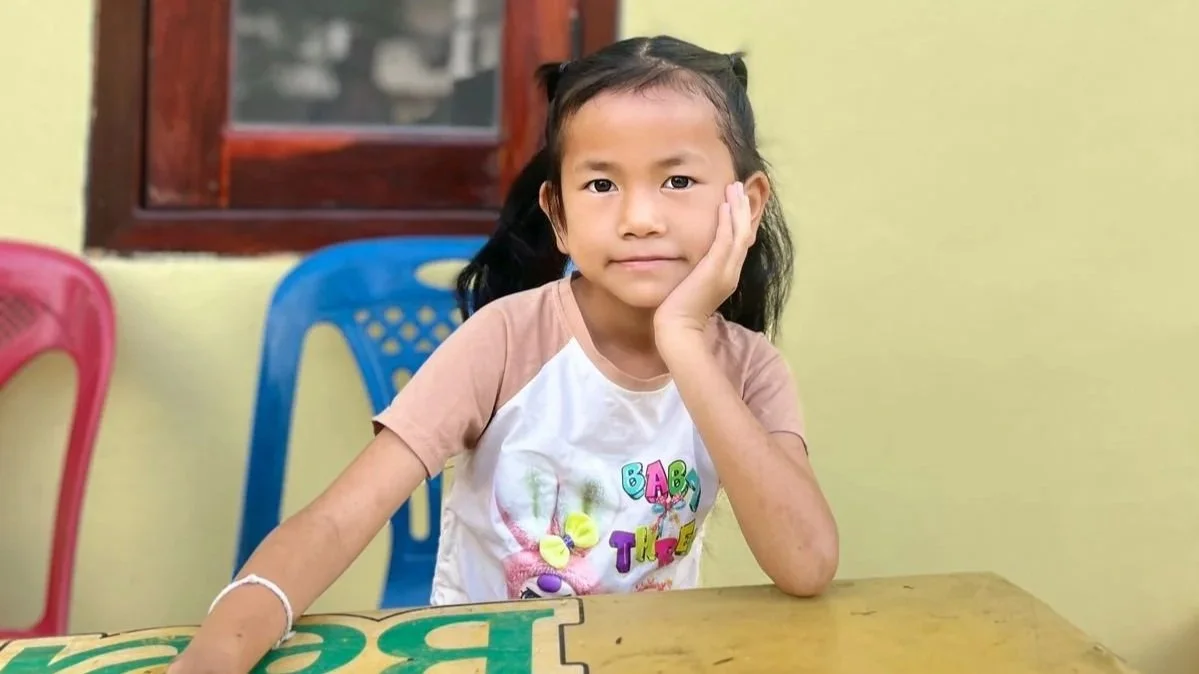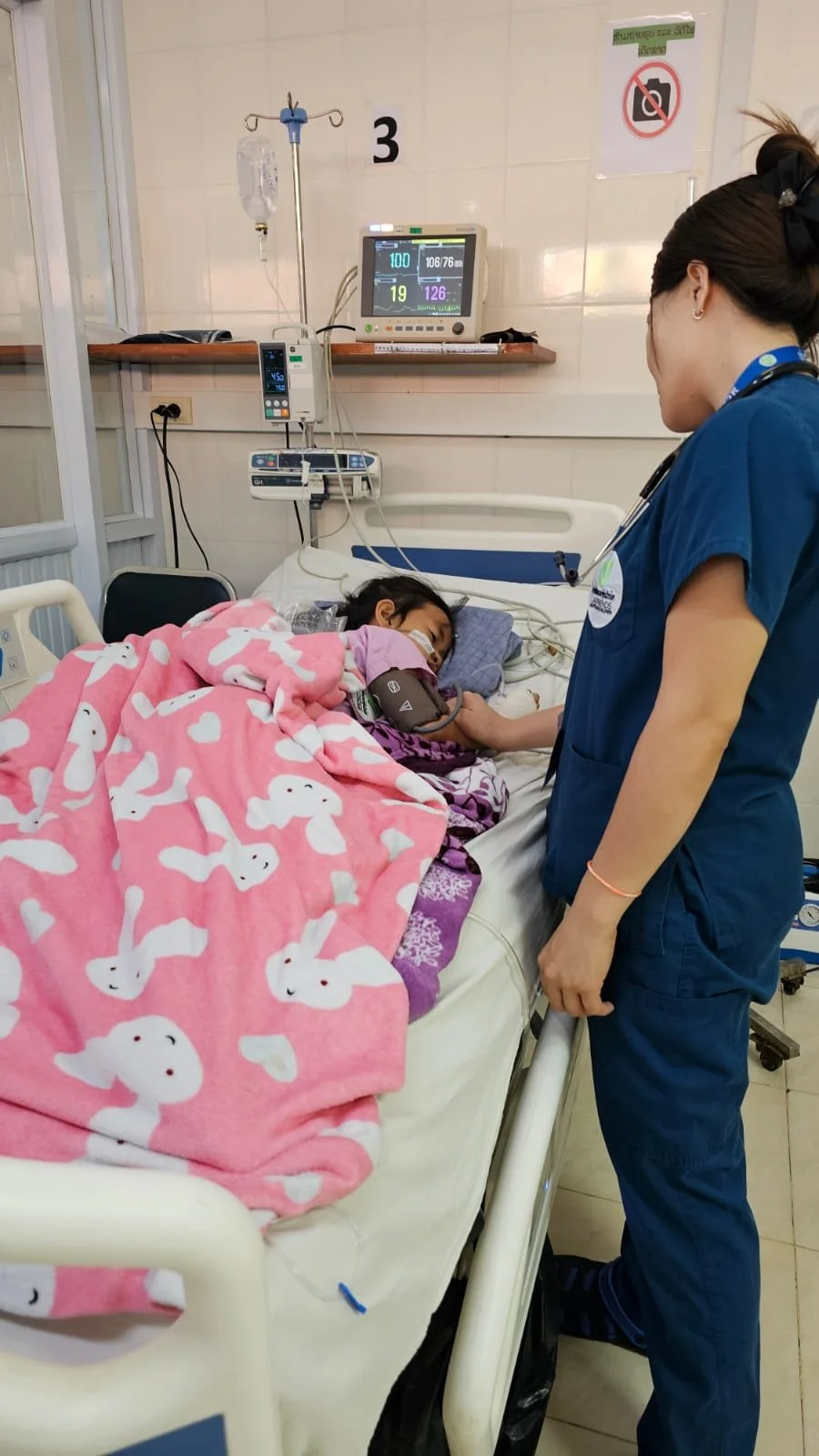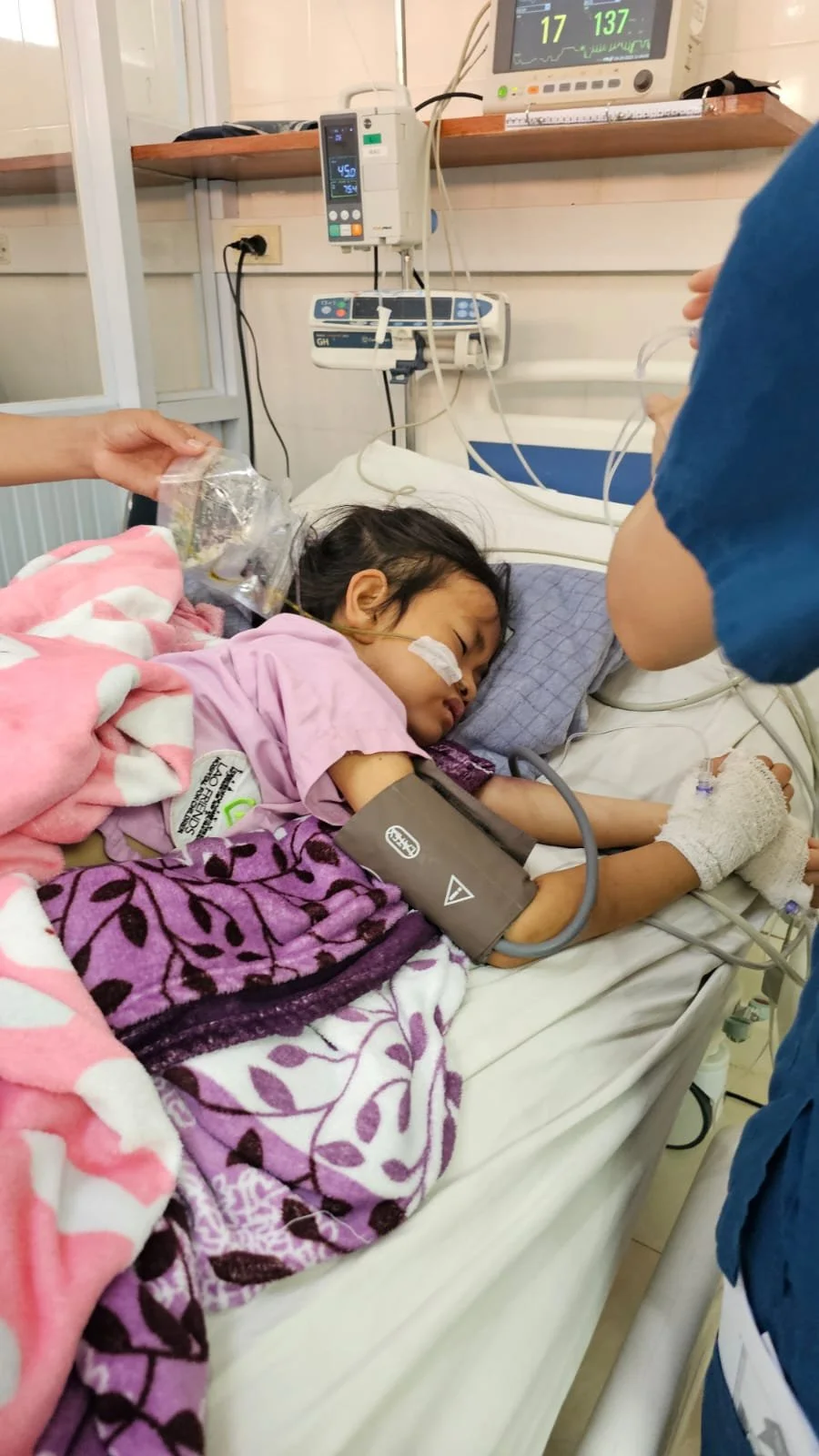Waking Up From a Coma
Waiy’s story: Surviving a severe septic shock and diabetic ketoacidosis
Waiy, a nine-year-old girl, is usually full of life. They live in a small, quiet village in Xayaboury Province. She had never been seriously ill before.
It began quietly. She felt weak and didn’t feel like eating. Over the next two days, her appetite disappeared, and she was vomiting a lot. She became increasingly lethargic and found it hard to drink water or swallow fluids without vomiting. Her parents, concerned, brought her to the local clinic, where she was told it was just a throat infection (pharyngitis) and sent home with paracetamol.
The next morning, they found her unresponsive. Terrified, her parents wrapped her in blankets and made the long and arduous 3-hour journey to Lao Friends Hospital for Children (LFHC) in Luang Prabang.
When Waiy arrived at LFHC’s Emergency Room, her condition was dire. She was in a comatose state. She had no eye opening, no verbal response, and only abnormal or minimal reaction to pain. Her pupils didn’t respond to light. Her neck was stiff, her body limp. But she was still breathing on her own, which offered hope to her parents. A series of life-threatening conditions were immediately suspected.
Doctor Pom, one of our most senior doctors, led the team through rapid tests and assessments.
The results painted a grim picture: Waiy was in severe septic shock and severe diabetic ketoacidosis (DKA), a serious complication where the body, lacking insulin, starts breaking down fat too quickly, releasing dangerous acids called ketones into the blood. Her kidneys were also beginning to fail.
Although it’s still unclear whether the overwhelming infection triggered the DKA or if both conditions developed in parallel, the outcome was the same: her body was in full crisis and has started to shut down.
The Emergency Team began resuscitating her immediately. That meant carefully bringing her body back from shock, restoring fluid levels, supporting her blood pressure, and starting insulin infusion to lower her blood sugar and stop the production of ketones. Managing DKA is highly complex, requiring hourly blood tests, precise fluid calculations, and constant adjustment of insulin levels. If not managed correctly, Waiy can suffer from brain swelling or heart complications. It is one of the most intensive forms of pediatric care, but LFHC’s ICU team rose to the challenge. Every blood test mattered. Every adjustment was life-saving.
Dr. Pom sat with Waiy’s mother, explaining the seriousness of her condition. Despite a poor prognosis, on her third day in the ICU, she opened her eyes. Though confused and irritable, she responded to touch. Her insulin infusion continued as her electrolyte imbalances were slowly corrected.
Eight days later, she was strong enough to be transferred to the inpatient ward. There, her care shifted towards long-term support.
A life-changing diagnosis
Her mother was informed that Waiy had been diagnosed with Type 1 Diabetes, a condition that requires daily vigilance, reshaping not only Waiy’s future but her mother’s role as her caregiver. Our team carefully explained to her mom what her care will involve from this moment forward. Our nutrition team helped Waiy regain strength while nurses taught her mother how to monitor blood sugar and give insulin. The Outreach Team began planning her out-of-hospital care.
Type 1 Diabetes requires lifelong care, but at LFHC, she will be supported every step of the way. Through our Endocrine Clinic, children like Waiy receive free insulin medication, blood monitoring test kits, regular outpatient checkups, and continuous education from diagnosis through to adulthood.
Today, Waiy is healing and getting back to normal. Her life has changed forever, but she survived a deadly crisis. LFHC will be there to support her and her family for the long run.
Thanks to the care she received, her future is full of possibilities.







